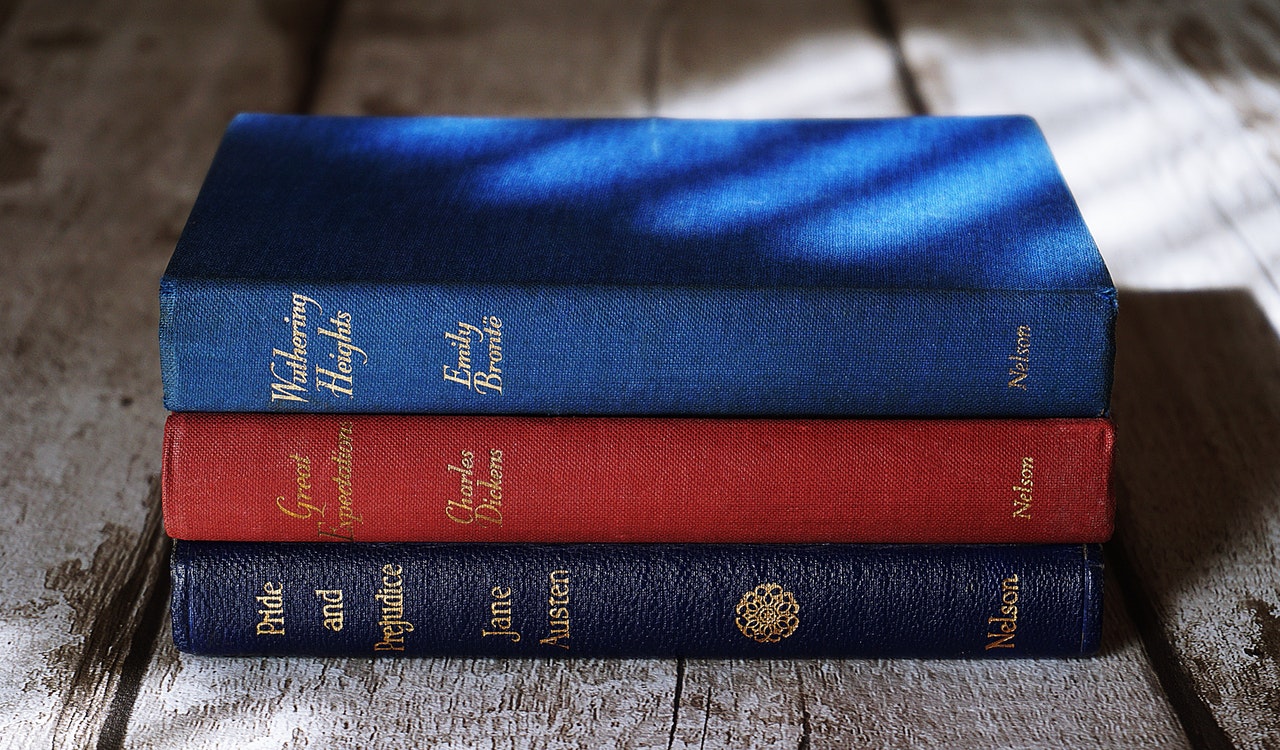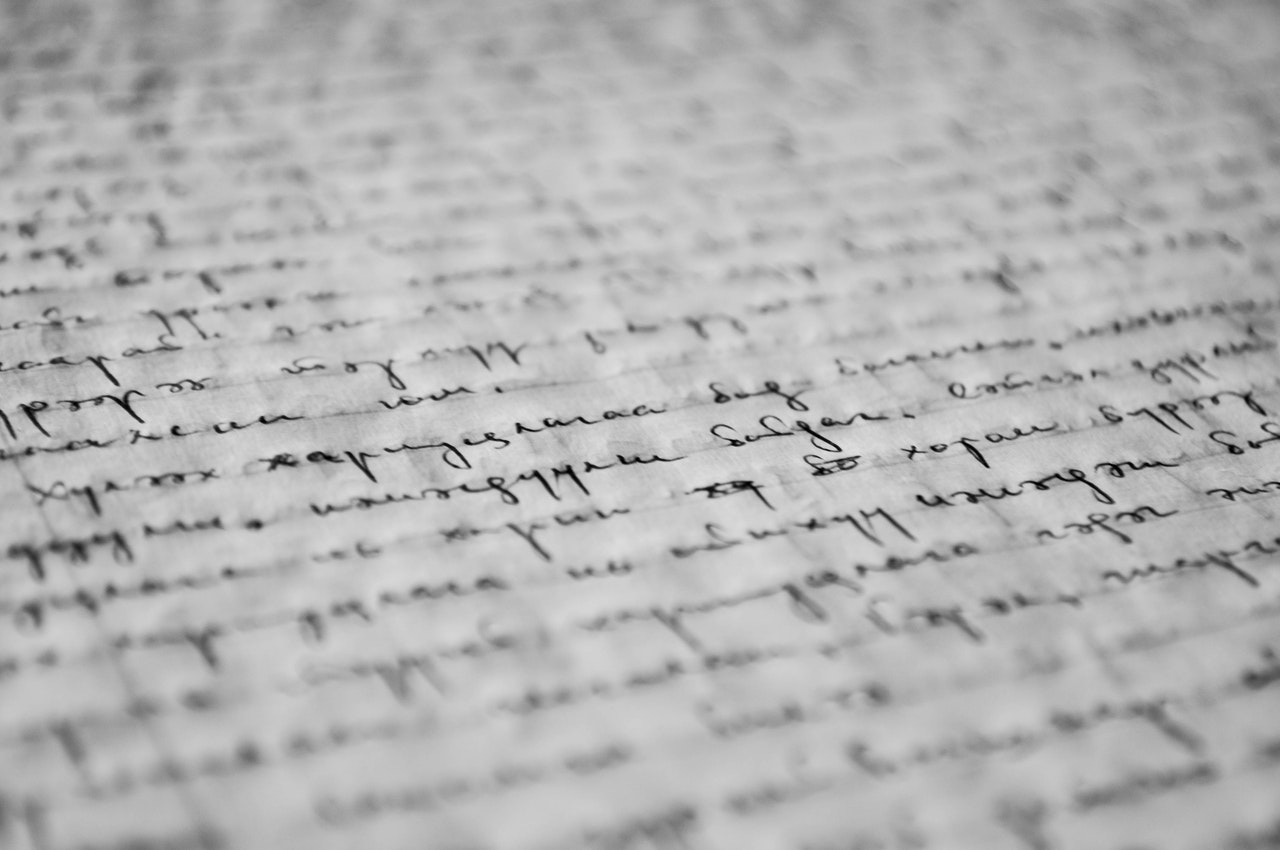Are you studying Pride and Prejudice for English and struggling to come up with your analysis? Don’t fret! We’re going to walk you through a summary, the key themes, characters and context of Pride and Prejudice as well as give you a step-by-step guide of how to analyse the text.
PLUS we’ll provide you with a sample analysis table (also called a TEE table) and a sample paragraph for Pride and Prejudice!
It’s time to ace your analysis of Pride and Prejudice — let’s go!
Pride and Prejudice Summary
Key Characters in Pride and Prejudice
Context
Themes Explored in Pride and Prejudice
Analysis of Pride and Prejudice
Studying this Text for the VCE
Summary of Pride and Prejudice
Pride and Prejudice is an 1813 novel by Jane Austen set in the rural Regency era of Hertfordshire, England. Though it’s not easily understandable for modern readers like us, Pride and Prejudice is also a romantic comedy with lots of irony, satire and a happy ending.
Netherfield is let at last!
The novel begins with the arrival of Charles Bingley and Caroline Bingley, whose wealth comes from their late father’s success in trade. They are one of the many families that are the “new money” of the upper class.
He is accompanied by his trusted friend, Fitzwilliam Darcy, who comes from the landed élite. His wealth comes from the property he inherits and thus Darcy is part of the old money gentry.
The Bingleys and Darcy stay at Netherfield Park near the settlement of Longbourn, where our main heroine, Elizabeth Bennet, and her family live.
For the five unmarried daughters in the Bennet family, Bingley’s arrival is important news because they all must be married to someone financially well-off — when their father, Mr. Bennett, passes away, none of his property will be inherited by his daughters but by the closest male relative (this is because of something called an “entail”).
Handsome, but not enough to tempt me
The Bennet family attends the Meryton ball where the Bingleys and Mr. Darcy also join. Charles dances the entire evening and immediately becomes infatuated with Jane, the eldest daughter of the Bennet family.
However, Mr. Darcy seldom dances and Elizabeth overhears him saying that she is “tolerable; but not handsome enough to tempt me”. Mr. Darcy’s snobbish behaviour and unwillingness to dance makes everyone at the ball, Elizabeth especially, find him disagreeable, even if he is rich and owns a large estate at Derbyshire.
Meanwhile, the militia move to a nearby town, which is delightful news to Kitty and Lydia, the younger two daughters in the Bennet family. They meet a handsome officer, George Wickham.
The Bennet sisters soon find that Mr. Darcy and Wickham know and dislike each other. Wickham claims that he was the godson of Mr. Darcy’s father and Darcy refused to give the parsonage that his father left for Wickham, leaving him to join the army.
Six inches deep in mud
Jane falls ill and stays at the Bingley’s at Netherfield to get well. Elizabeth walks through a field to visit Jane to which Caroline gossips about Elizabeth’s messy appearance and how her gown was “six inches deep in mud”.
In the evening, they play cards and talk about what makes a woman accomplished. Mr. Darcy emphasises that the accomplishments of singing, dancing and drawing are not enough.
For Mr. Darcy, a woman “must yet add something more substantial, in the improvement of her mind by extensive reading” —he believes he doesn’t know more than a dozen accomplished women. Elizabeth is surprised at his expectations, claiming she never saw such a woman.
Two chapters ahead, Mr. Darcy and Elizabeth have another witty debate on resentment, pride and vanity. Although Mr. Darcy tries to understand Elizabeth’s point of view, even ending their conversation with a smile, Elizabeth continues to see Mr. Darcy as flawed “to hate every body”.
Mr. Collins, who is heir to the Bennet property, visits the Bennet family. Mr. Collins proposes to Elizabeth much to her surprise. She refuses, because she wishes to marry for love.
He does not accept her refusal as he thinks Elizabeth’s “first rejection” is merely a tactic women use to further gain men’s affections. Of course, Elizabeth is genuinely refusing his proposal.
Mr. Collins soon marries Charlotte Lucas, Elizabeth’s closest friend. At first, Elizabeth is shocked to hear this as she assumes that Charlotte would be miserable in the marriage — however, she, once again, misjudges the people around her. Charlotte tells her that unlike Elizabeth, she is “not a romantic you know. I never was”.
The Bingleys go to London and Charles has not yet made an effort to visit Jane.
Darcy’s ardent confession
Elizabeth visits Hunsford Parsonage, where Charlotte and Mr. Collins live. They all visit the nearby estate, Rosings Park, where the noblewoman Lady Catherine de Bourgh lives.
Mr. Darcy and his cousin, Colonel Fitzwilliam, are staying at Rosings too — Lady Catherine is their aunt.
While out on a walk, Colonel Fitzwilliam tells Elizabeth that Bingley is avoiding Jane on Mr. Darcy’s advice as he believes Jane’s lower social status, gossiping mother and improper younger sisters make Jane an undesirable partner.
Mr. Darcy confesses his love for Elizabeth and proposes to her. He tells Elizabeth “how ardently I admire and love you” despite all his endeavours to try to repress his feelings. Elizabeth refuses him and further berates him for separating Jane from Bingley and betraying Wickham.
Mr. Darcy writes Elizabeth a letter the next morning. In the letter, he explains that Wickham was lying about Mr. Darcy’s so-called “betrayal” and that he offered Wickham the parsonage, but he wanted money instead that he soon wasted away.
Wickham also tried to elope with Georgiana, Mr. Darcy’s younger sister, to gain her inheritance. He also writes that he is not sorry for separating Jane and Bingley and reassures her that he will not propose to her again.
Elizabeth realises that she was too proud and misjudged other’s characters, having the same flaws she once saw in Mr. Darcy.
Visiting Pemberley
Lydia goes to stay with the wife of Colonel Forster, spending more time with the militia. Elizabeth joins her aunt and uncle Gardiner. They visit Pemberley, which is Mr. Darcy’s estate, with the belief that he is not home.
He is, however, and unexpectedly encounters Elizabeth and the Gardiners. To Elizabeth’s surprise, he addresses them all politely and invites them to meet her sister and the Bingleys.
News comes of Lydia’s elopement with Wickham, leaving Elizabeth in anguish. Mr. Gardiner sets out to find Lydia and bribe Wickham to marry her.
This saves the Bennet daughters from the scandal of having an eloped family member. Although the Bennet family believe that it was Mr Gardiner who paid the bribe, Elizabeth soon finds out it was Mr. Darcy.
Elizabeth’s feelings have changed
Charles returns to Netherfield and, at last, proposes to Jane. About a week after, Elizabeth is visited by a mad Lady Catherine who accuses Elizabeth for trying to marry Mr. Darcy for his money and social status.
Lady Catherine tries to make Elizabeth promise to never marry Mr. Darcy, however she refuses to promise.
Mr. Darcy stays at Netherfield with Bingley and they visit the Bennet family. Elizabeth and Mr. Darcy walk together and reflect on how they have both changed one another for the better.
Darcy tells her that his feelings have not changed and Elizabeth accepts his proposal.
Pride and Prejudice Characters
Elizabeth “Lizzy” Bennet
The heroine of Pride and Prejudice. Second eldest daughter of the Bennet family. Witty, clever, a little stubborn and wishes to marry for love.
She challenges Darcy with her intelligence and changes his pride. She is a member of the upper class though has no inheritance.
Jane Bennet
The eldest daughter of the Bennet family. Beautiful, kind and modest. She does not care for class or rank.
Fitzwilliam Darcy
Rich aristocratic landowner, master of Pemberley. Nephew of Catherine de Bourgh. Worth £10 000 a year (about £590 000 today!)
Having inherited his wealth, he first sees himself as superior to others lower in rank and class. Though he is arrogant, he is self-aware and changes as the novel progresses.
Charles Bingley
A rich young man. He is said to be “good-looking and gentlemanlike; a pleasant countenance and easy, unaffected manners.”
At the beginning of the novel, he does not own any property and thus “lets” (rents) Netherfield Park. Like Jane, he does not care about class or rank. Makes about £4000 a year (about £236 000 a year)
Caroline Bingley
Charles’ sister. Mean and snobbish. She makes fun of Mrs Bennet’s middle-class background despite her father also being middle class.
Lydia Bennet
The youngest daughter of the Bennet family. Fifteen years old, immature and silly. This leads her to be manipulated by Wickham.
Lieutenant George Wickham
A newly-appointed officer of the militia. He is attractive and charming, however deceitful.
He lies about Darcy’s past, tried to marry Georgina for her inheritance and elopes with Lydia. He marries Lydia after accepting a bribe from Darcy.
Mr Collins
The heir to Mr Bennet’s estate. He is pompous, though low in social rank and little educated. He is a clergyman and his patron is Lady Catherine de Bourgh.
Charlotte Lucas
Elizabeth’s closest friend. She is older, not so attractive and on the verge of spinsterhood before she marries Mr Collins.
Catherine “Kitty” Bennet
The second youngest Bennet sister who, like Lydia, is also immature and infatuated with the militia.
Mary Bennet
The third Bennet sister. Bookish and prefers reading over socialising.
Mr Bennet
Patriarch of the Bennet family. Reserved, laughs at his daughters’ immaturity however, does not teach them better.
Mrs Bennet
Mother of the Bennet family. Fretful for her daughters’ bleak financial futures, she is a comical character in the novel.
Lady Catherine de Bourgh
Daughter of an earl. Haughty and pompous. She comically represents aristocratic pride.
Context
Through the romances and courtships in Pride and Prejudice, we can understand the anxieties of Austen’s time and how politics burdened English women, like the Bennet sisters, during Regency England.
Austen wrote during the transformative age in 1800s, where the strict social hierarchy was constantly challenged by various social groups and it thus can be read as both a feminist text and as a conservative text of her time.
Mobility and Rigidity in the Social Hierarchy
In upper class life during the Regency era, there were many “new money” people who obtained their wealth through trade.
The newly-rich often bought grand estates and hosted lavish parties to meet others of the upper class — so, there were many balls at that time.
Balls were new public spaces where social mixing between the middle and upper class could occur (this excluded people with no property, the majority of people). This lead to marriages between people of different classes, where new wealth actually reaffirmed the aristocratic order by assimilating people into the upper class.
We can see this in the marriage of Mrs. Bennet with Mr. Bennet, Jane Bennet with Charles Bingley and, of course, Elizabeth and Mr. Darcy.
These new public spaces also called for strict rules of “politeness”, where conversation had to be pleasurable and avoid giving pain through topics about social divisions.
The British Monarchy, the Aristocratic Order and Burkean Conservatism
While the bloody event of the 1789 French Revolution and the downfall of the monarchy sparked a revolutionary spirit in England, this is not covered in the social upper-class bubble in Pride and Prejudice.
Austen in Pride and Prejudice seems to embrace the Conservative political philosophy of Edmund Burke, who was a prominent member of the British Parliament in the late 1700s. This “Burkean Conservatism” supported the rigid class hierarchies and the aristocratic order.
Romantic Era poets such as William Wordsworth and Samuel Taylor Coleridge supported the revolutionary and democratic ideals.
Gender Divisions and Wollstonecraft’s Feminism
The bleak financial future of Bennet sisters (if they do not find wealthy husbands) reveals the little economic power women held in the Regency Era. Money and economic difference plays a central role to the plot of Pride and Prejudice.
Spinsterhood was seen as doom, where women had little means of money and “entailments” made it difficult to inherit their own father’s property — the only option for survival was to marry rich and thus, marriage was treated as an economic proposition or business transaction rather than for true love. Through the Bennet family, Austen put the institutions of society regarding women under criticism.
About the same time as Burkean Conservatism, the radical writer, Mary Wollstonecraft, published “A Vindication of the Rights of Men” stating that women should have equal rights to men (especially of education).
She championed many feminist and democratic values in her work that, funnily enough, opposed the conservative values of the aristocratic order. In particular, she discouraged the idea that women should not have to play the role of an innocent and pretty wife, arguing that marriage made them miserable.
Elizabeth Bennet, as an intelligent and strong-minded woman who refuses two marriage proposals, reflects Wollstonecraft’s feminism. However, she does reaffirm the aristocratic order by marrying Mr. Darcy — what can you analyse from this?
Pride and Prejudice Themes
Pride and Prejudice mixes the old with the new, exploring these tensions through the romantic-comedy genre. Here are some that get you started on your thesis and topic sentences:
- Pride
- Prejudice
- Social class and privilege
- Gender inequality
- Marriage
- Economic inequality
How to Analyse Pride and Prejudice in 3 Steps
Often students will try to start with their thesis when trying to answer an essay question.
Instead, start with your analysis! You need to equip yourself with the knowledge of your text before you can answer anything about it.
After you’ve analysed your text, you can draw ideas from it, then you can build your thesis!
We’re going to walk you through creating an analysis for Pride and Prejudice in three simple steps!
Step 1: Choose your example
The best way to choose an example is to find a technique. The technique is the key to unlocking deeper meaning in a text, which you will need in your analysis.
We have chosen to look at a quote from the Meryton Ball scene where Mr. Darcy is disagreeable and indirectly insults Elizabeth:
“tolerable, but not handsome enough to tempt me”
Check out our list of top 50 quotes from Pride and Prejudice here!
Step 2: Identify your technique(s)
When trying to find a technique within your example, it’s not about finding the fanciest technique or just any old technique for that matter!
It’s about identifying a technique which will enable you to say something about your idea that’s interesting and can contribute to your argument and analysis.
Try to focus on finding examples with techniques which unveil a deeper meaning like metaphors, similes, figurative language, connotations, symbolism and recurring motifs. Other techniques like alliteration and repetition are a bit harder to find a deeper meaning in!
We have identified 2 techniques in the quote above: archetype and juxtaposition.
It’s always great to try and find multiple techniques in your quotes as it allows you to take your analysis up a notch!
Step 3: Write the analysis
When you write the analysis, it is important to always focus on what the effect of the technique is. One of the worst things you can do when writing analysis is technique labelling. Technique labelling would look like this:
Mr. Darcy portrays the archetype of the snobbish aristocrat and deems Elizabeth “tolerable, but not handsome enough to tempt me“, where Austen juxtaposes “tolerable” and “handsome”.
Instead of this we need to flesh out how each of those techniques get us to our point.
Firstly, the archetype of the snobbish aristocrat can be reinforced with cultural context to further analyse Mr. Darcy’s character.
We also need to dig deeper into the effect of juxtaposing “tolerable” and “handsome” — it shows Mr. Darcy equates women’s worth with appearance. So if we include all that in our analysis it looks like:
As the archetype of the snobbish aristocrat, Mr. Darcy’s first appearance in the novel reveals the worst of this upper-class male privilege, especially as he deems Elizabeth “tolerable, but not handsome enough to tempt me“. The juxtaposition between between someone being “tolerable” and “handsome” not only reveals how he believes women have to be good-looking enough to be worth his attention, but also how, as a member of the landed gentry, his wealth and power make him above the general rules of politeness that coded interactions between different classes.
Step 4: Practise with sample essay questions
Even if you’ve written an incredible essay, if you don’t respond to the question or stimulus that you’re given in an exam, you could miss out on a Band 6.
Luckily for you, we’ve got plenty of practise questions on our resources page for you to use!
Here are Practise Questions for the Year 11 Common Module: Reading to Write to get you started!
Studying this text for VCE Unit 3 – Area of Study 1: Reading and Creating Texts
If you are studying this text as a part of VCE unit 3, Area of Study 1, Reading and Creating Texts, there are a few more things to keep in mind!
One of the important aspects of this Area of Study is having your own interpretation of the text. This means that you can’t just state what is obvious about the text, instead, you need to make an argument. To have an interpretation of the text, you need to make an argument about something in the text which is not blatantly obvious.
For example, saying “Pride and Prejudice is about how marriage was important to women during the Regency Era” is not a strong interpretation, because that’s obvious! Everyone can see that from reading the plot synopsis. Instead, try to make your interpretations something you have to dig a little deeper in the text to find. For example, we have argued:
Austen’s Pride and Prejudice explored how the money-oriented institution of marriage reproduced social and gender conventions during the Regency era.
This is a strong interpretation because it took reading into numerous quotes and signs and symbols to develop it. Below, we have explained how to come up with your own interpretation.
Step 1: Identify techniques in your text
Techniques are key to unlocking the deeper hidden layers of meaning in your text, which is exactly what you want to find when developing your own interpretation.
Things like metaphors, similes, symbolism and recurring motifs are great things to look for. Things like alliteration and sound techniques will be less helpful in allowing you to uncover deeper meanings initially.
Step 2: Analyse the techniques
In this step you want to ask yourself:
- Why have they chosen to use this specific technique?
- Why was the word choice here important?
- Is there something deeper behind this quote (connections to the text, the context, the lesson readers learn)?
Step 3: Find patterns in what your analysis is saying
Once you find patterns in what your analysis is saying, or in other words, patterns in the hidden meanings within the text, you have yourself an interpretation!
For example, through our analysis of Pride and Prejudice, we noticed a pattern of how Austen makes Elizabeth intelligent and defiant throughout the novel. However, in the end, she reaffirms the class order by marrying Mr. Darcy who still represents the aristocratic order, even though they are for reasons of love (remember that he makes ten thousand a year from land!).
Creative Writing
If you are studying this text to help you write a piece of creative writing, an interpretation will be helpful in allowing you to build your own unique response to the text. For example, since our interpretation says the text breaks gender stereotypes about power, we might have a short story where a female character is constantly undermined by those around her yet, when she finally lets go of them, she realises that she had the power all along.
If you are doing creative writing for this assessment, it is also super important that you know about the textual features of ‘Pride and Prejudice’, because you will need to demonstrate you can replicate as well as alter some of these elements. We have made a list of the elements of the text below:
- Motif or recurring metaphor
- Strong use of imagery
- Strong use of metaphors and figurative language
- Fragmentary chapters
- Non-linear timeline
- Third person narration
- Multiple perspectives
You might also like to think of a way you can use these elements but slightly alter them. For example you won’t have fragmentary chapters in your creative writing because it will be too short, but you could instead include small fragmentary sections which change between points of view!
Looking for tailored support to help you understand Pride and Prejudice? We’ve got a wonderful team of Melbourne English tutors that can provide you with VCE support!
Need some help analysing other texts?
Check out other texts we’ve created guides for below:
- All the Light We Cannot See
- Lord of the Flies
- Hamlet
- Jane Eyre
- Photograph 51
- Little Miss Sunshine
- In Cold Blood
- To Kill a Mockingbird
- Amélie
- The Book Thief
- The Tempest
- Blade Runner
- Jasper Jones
- Things Fall Apart
- Mrs Dalloway
Check out our Ultimate Guide to Unit 4 of QCAA English!
Are you looking for some extra help with your analysis of Pride and Prejudice?
We have an incredible team of tutors and mentors!
We can help you master your analysis of Pride and Prejudice by taking you through the summary, context, key characters and themes. We’ll also help you ace your upcoming English assessments with personalised lessons conducted one-on-one in your home or online!
We’ve supported over 8,000 students over the last 11 years, and on average our students score mark improvements of over 20%!
To find out more and get started with an inspirational tutor and mentor, get in touch today or give us a ring on 1300 267 888!
Lynn Chen is a Content Writer at Art of Smart Education and is a Communication student at UTS with a major in Creative Writing. Lynn’s articles have been published in Vertigo, The Comma, and Shut Up and Go. In her spare time, she also writes poetry.











